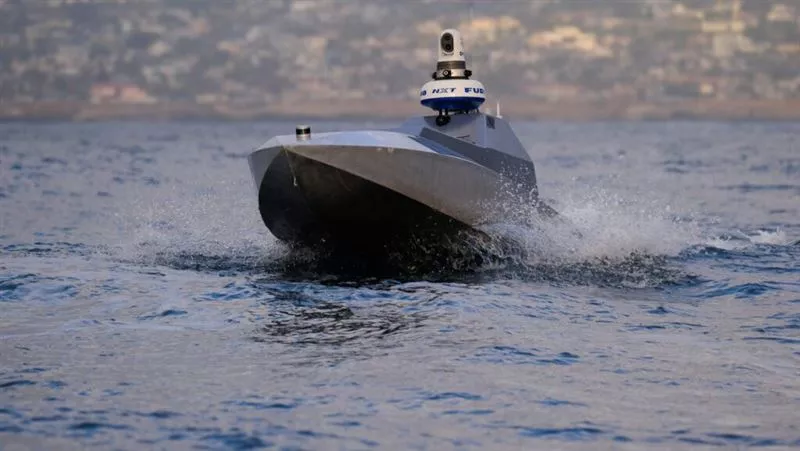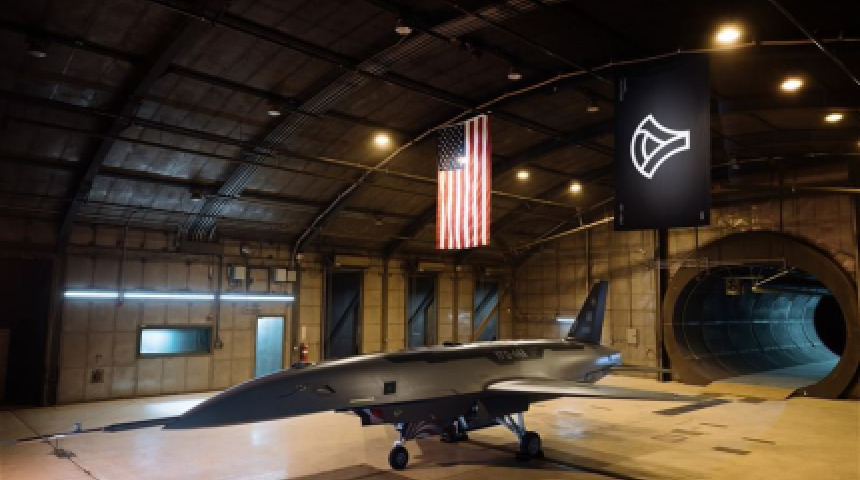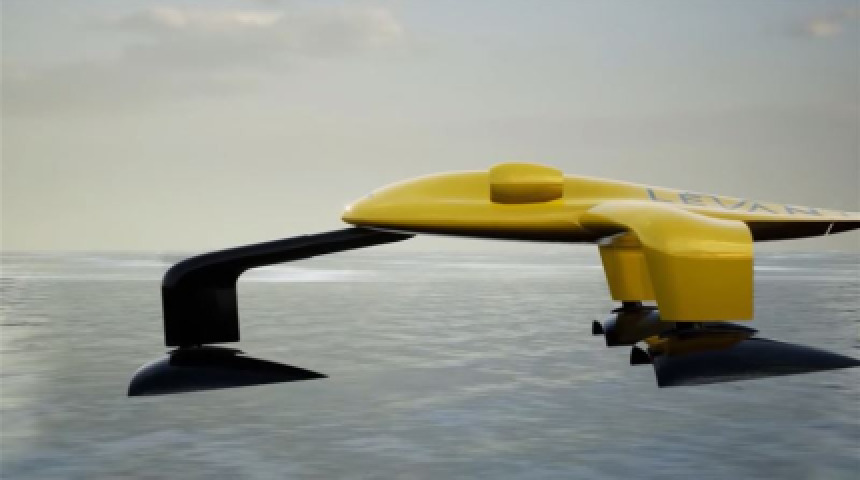美軍新海上獵手登場!Seasats「迅魚」無人艇亮相 兼具長航續航與強韌偵監能力

迅魚Quickfish無人水面載具(USV),上圖取自seasats公司網站
美國無人艇製造商 Seasats 推出全新小型無人水面載具(USV)——「迅魚」(Quickfish),強調在惡劣海象下依然具備長航時與高可靠度,並能執行多任務偵察、巡邏、攔截與防衛任務。該艇艇長約 5.3 公尺,最快航速超過 35 節(約時速 65 公里),可在 浪高 3 公尺、風速達每小時 50 公里 的海況中穩定操作,續航時間長達數週,顯示美軍對 持續海域覺知(MDA)與低成本長時監控平台 的新需求。
The US-based Seasats unveiled its “Quickfish” USV — a 5.3m autonomous vessel boasting weeks-long endurance, 35+ knot top speed, and robust performance in sea state 6, built for persistent maritime domain awareness and patrol missions.
🔹 高續航 × 惡海作業力:戰場監控新利器
「迅魚」設計目標是讓單艘小艇可長時間獨立在外海巡航執勤,支援海上監控、近岸執法與海洋情報任務。其艇體採 複合材料流線設計,具備自我穩定系統與防翻覆結構,能長時間保持穩定航姿。搭載多組高解析光電感測器與通信模組,確保能在低能見度或電子干擾環境下維持態勢掌握。
Designed for multi-week autonomy, Quickfish uses composite hull shaping and self-righting design to endure harsh seas while maintaining ISR capability through advanced EO sensors and resilient communications.
🔹 搭載無人機,實現「海上節點」概念
除了水面偵測與巡航外,「迅魚」還能搭載與發射小型無人機,形成「海上偵監節點」(Maritime ISR Node),結合水面與空中感測,擴展情監偵範圍。這使其能同時執行 海上情報蒐集、近岸監控、水文資料收集與目標攔截 等多樣化任務。
The USV doubles as a launch platform for micro-UAVs, functioning as a distributed maritime ISR node — integrating air and surface surveillance in one compact system.
🔹 已進入實戰驗證階段
根據《Breaking Defense》,「迅魚」近期參與美國海軍的海上演訓,展現高穩定度與自主導航性能;並已獲得 美國國防與執法單位 的初步採購訂單。Seasats 亦宣布與 日本、澳洲、菲律賓 等國簽署合作協議,規劃透過當地組裝與維保體系推廣「迅魚」系列。
Quickfish has already participated in US Navy exercises and secured undisclosed defense and law enforcement contracts. Seasats has also inked deals with Japan, Australia, and the Philippines for local production and deployment.
🔹 官方談話:可靠、耐用、可量產
Seasats 執行長 Flanigan 表示:「過去的小型無人艇常因耐用度不足而受限,但 Quickfish 集成了先進技術與海況測試成果,將在量產後成為美軍中最具代表性的近海監控平臺之一。」
“We’ve overcome the reliability and endurance gaps that plagued small USVs,” said Seasats CEO Flanigan. “Quickfish is designed for mass deployment — durable, affordable, and mission-flexible.”
🔹 戰術與戰略意義(Strategic Outlook)
-
低成本長時監控節點(Persistent ISR at Scale):相較大型海上無人艦,Quickfish 可形成網狀部署,長期維持情報蒐集與預警監控。
-
強化印太海域防衛網(Indo-Pacific Relevance):小艇可快速部署於島鏈、港灣或前線水域,對抗無人潛艦、快艇或灰色地帶行動。
-
盟國共研共製(Allied Interoperability):透過日本、澳洲、菲律賓的合作,Seasats 正推動「盟邦共用模組化USV」,符合美軍「分散式海上作戰(DMO)」思維。
Quickfish exemplifies distributed maritime ISR for DMO concepts, offering scalable, cost-efficient coverage — highly suited for Indo-Pacific allied cooperation.
🔹 風險與挑戰(Risks & Challenges)
儘管 Quickfish 展現潛力,但仍需克服 海上能源續航、通信中繼延遲、惡劣天候自主導航安全 等挑戰;若擴展軍事應用,還需面對電子戰干擾、敵方攔截與海況長期腐蝕的考驗。
Key technical challenges include maintaining long-endurance power in rough seas, resilient comms under jamming, and durability for months-long saltwater exposure.
📌 結語
Seasats「迅魚」的問世,象徵美軍正推進小型、自主、可持續部署的海上無人戰力布局。它不只是低成本替代方案,更是未來「海上感測網格」的節點單元。對印太地區與台灣而言,這種長航時、可混合部署的 USV,未來可用於港灣偵測、海岸防禦與水面反滲透任務,將成為無人海戰體系中不可忽視的新角色。
Quickfish embodies the shift toward persistent, distributed, and allied-integrated maritime ISR. For Taiwan and regional partners, it previews how compact USVs could redefine coastal defense and maritime awareness.




回應文章建議規則: